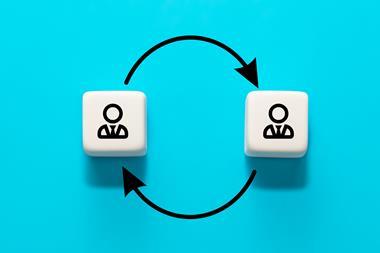Personal injury mediation is big in North America, but not here.Tony Newman explains the benefits
Insurers commonly recite the Woolf edict: "litigation should be a last resort". This makes perfect sense - sense from the perspective of claimants, who want the settlement they are entitled to as quickly as possible; and sense from the perspective of defendant insurers for whom avoiding litigation means reduced legal costs and improved cycle time to settlement, which brings administrative savings.
For the first time since its introduction the pre-action protocol for personal injury (PI) includes an alternative dispute resolution section. It states:
"Both the claimant and defendant may be required by the court to provide evidence that alternative means of resolving their dispute were considered. The courts take the view that litigation should be the last resort.
"Parties are warned that if the protocol is not followed (including this paragraph) then the court must have regard to such conduct when determining costs."
The Protocol then lists three forms of alternative dispute resolution, one of which is mediation.
What is mediation?
The protocol describes it as "a form of facilitated negotiation assisted by an independent neutral party". But what does that mean? How does it work?
Mediation is a consensual and confidential process. Both parties have to agree to participate. It cannot be forced on either party (forced mediation would not work - the parties have to want to reach settlement).
Whatever is said during the mediation cannot be repeated and used in the litigation process. No party has to make or accept an offer that they are uncomfortable with. Either party can end the mediation with or without agreement at any time.
In essence, the parties have total control over the outcome of mediation, unlike a trial where all rests in the hands of a judge. In practice, that should mean both parties are satisfied with any agreement reached unlike most judgments.
The process starts with the appointment of a mediator who, in advance, is provided with a bundle of documents relied upon by each side. The parties and the mediator all participate in a group "opening" session.
At that point the mediator will explain the objective and how the mediation will run, and the parties introduce themselves and provide a summary of their view of the case.
Afterwards the parties move into separate rooms and the mediator moves between them challenging positions, promoting thought and compromise.
The process allows both parties to 'stress-test' their case, to speak directly to the other side and to have the benefit of input from an independent party. The end result is usually a settlement.
How successful is mediation?
In the Court of Appeal decision in Daniels v The Commissioner of Police for the Metropolis [2005], Lord Justice Ward said: "We can and we do encourage mediation; the earlier the better. It does have an extraordinary knack of producing compromise, even where the parties appear, at the start, to be intractably opposed."
Figures produced by the leading mediation provider put the success rate (achieving settlement) at 80%-90%. Results tracked by Allianz Cornhill reflect those percentages. This is extraordinary given that these cases all involved dispute and would otherwise have headed for trial.
It is no short measure of success that mediation has become the normal process of resolving personal injury actions in the US and Canada.
Is mediation commonly used?
Regrettably, no. The largest mediation provider was instructed on less than 100 personal injury claims in 2005. This compares to over 3,000 in Canada, despite the fact that the population in England is 50% greater.
This underwhelming use was implied by Lord Justice Ward in the Court of Appeal decision in Burchell v Bullard [2005]. He said the court had given its stamp of approval to mediation and that it was now the legal profession that had to become fully aware and acknowledge its value.
What type of case is suitable?
In the context of personal injury, any claim where there is a dispute that cannot be settled either over the telephone or through a settlement meeting and the cost of the mediation is proportionate to the amount in dispute.
When should it be offered?
In the words of Lord Justice Ward: "the earlier the better". Essentially, as soon as you recognise there is a dispute that cannot be resolved by phone or at a settlement meeting, and that mediation is proportionate.
How much does it cost?
The Centre for Effective Dispute Resolution (CEDR) offers a fixed fee personal injury mediation scheme for claims up to £250,000. That covers the cost of administering the mediation and provision of the mediator.
There are two options:
(cost is split between the parties)
In addition there will be the cost of any solicitors attending with the parties - preparation and attendance. Insurers should consider agreeing fixed fees with their panel solicitors for mediation.
On this basis the approximate cost of a four-hour mediation would be £4,000 and eight hours £8,000.
Summary
Insurers all agree: "Litigation should be a last resort". The courts may now request evidence that the parties considered ADR, including mediation, and may penalise a party on costs if they have failed to do so.
The Court of Appeal encourages and supports the use of mediation.
Mediation is extremely effective, resolving 80%-90% of disputes, and has become normal practice in PI actions in North America.
When mediation is successful it is a true "win-win" situation. There are real and tangible benefits for claimants and defendants.
Through the CEDR fixed-fee scheme the cost of mediation may be proportionate on claims worth over £10,000 - especially if it preserves predictable fees.
Legal expenses insurers, such as Allianz Cornhill Legal Protection, are in favour of mediation and cover is usually available through a standard before-the-event policy.
However, mediation is rarely used in personal injury.
Conclusion
The landscape is set for the use of mediation in personal injury disputes to take off. It is supported by the Department of Constitutional Affairs and Judiciary and is now specifically referred to in the pre-action protocol with possible costs sanctions attached to non-use.
Insurers should welcome mediation and should specifically require claims handlers and panel solicitors to consider it on every personal injury claim where there is dispute. Where reasonable offers of mediation are rejected without good reason insurers should raise the point when it comes to costs.
The industry is the largest single user of the civil justice system. If we decide, collectively, to make personal injury mediation work, it will. IT
' Tony Newman is technical claims controller at Allianz Cornhill
Hosted by comedian and actor Tom Allen, 34 Gold, 23 Silver and 22 Bronze awards were handed out across an amazing 34 categories recognising brilliance and innovation right across the breadth of UK general insurance.













































